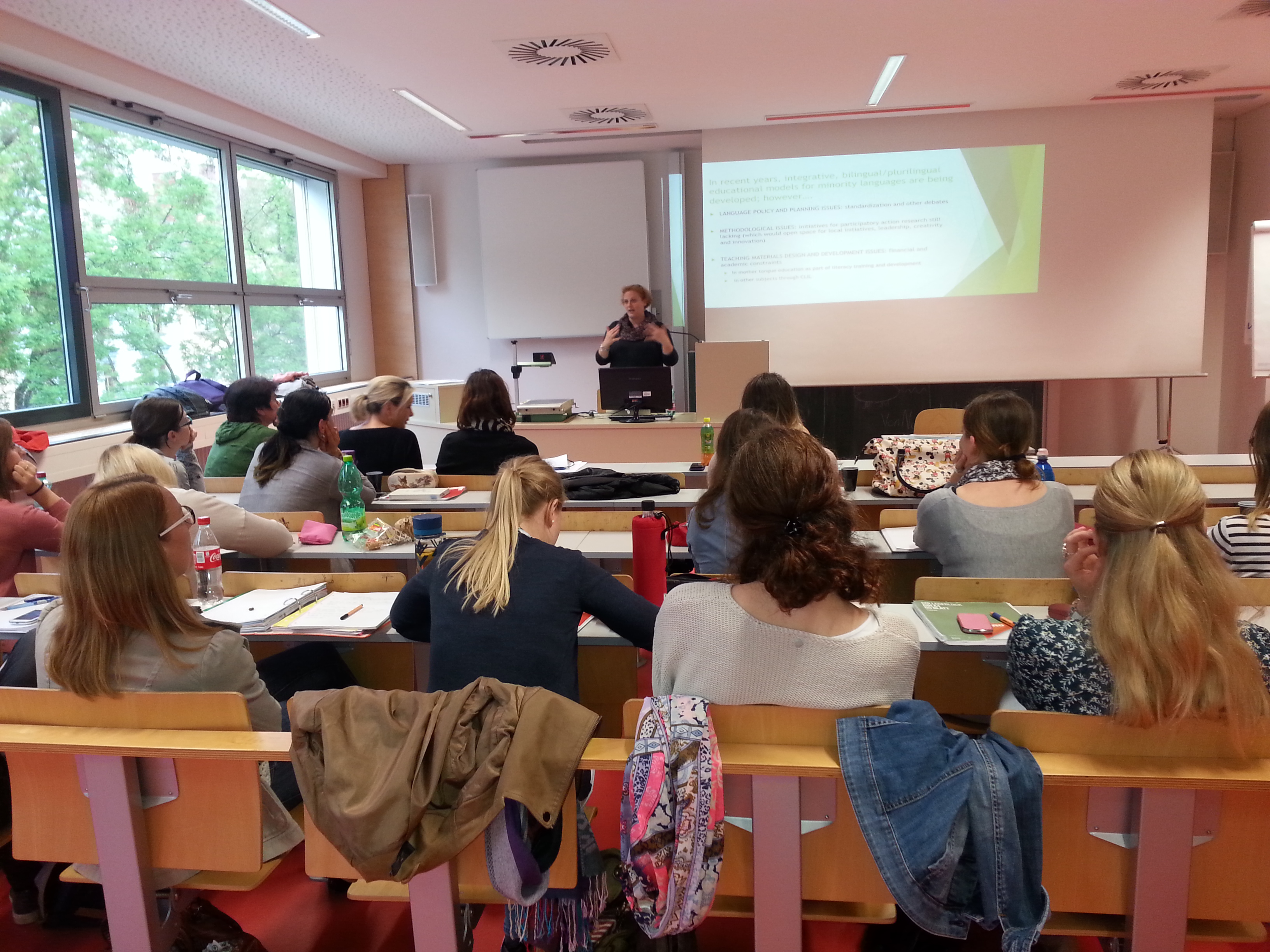Moderators: Barbara Schrammel-Leber and Jelena Filipović
 The language and culture of the Roma still today is a field that is hardly touched upon in teacher training in Austria. Austria has both an autochthonous and an allochthonous Roma minority, although Roma children in Austrian schools are often not recognised as such.
The language and culture of the Roma still today is a field that is hardly touched upon in teacher training in Austria. Austria has both an autochthonous and an allochthonous Roma minority, although Roma children in Austrian schools are often not recognised as such.
This workshop brought together 25 newly qualified teachers of primary and secondary schools in Austria - many of them teaching German as a second language to children with a migrant background – and future teachers from the University College of Teacher Education Styria.
The event provided an overview of the different groups of Roma living in Austria and about the history and structure of Romani as a European minority language that has only very recently been codified. It also served to introduce the outcomes of the Qualirom project, both the teaching materials as well as the teacher training module developed in the project, to Austrian teacher trainers, teachers and students. In addition, the event provided the participants with an overview of the models and methods for the integration of minority languages into formal schooling, a topic that is highly relevant for Romani as well as other European regional, minority and migrant languages.
*****
The QualiRom initiative (2011-2013), carried out under the European Commission’s Key Actions 2 programme, made extensive use of the Council of Europe’s Curriculum Framework for Romani (CFR) and two European Language Portfolio models. The initiative sought to promote the inclusion of Romani in education systems and to contribute to the integration of speakers of the language by improving the educational situation of Roma children, raising the self-esteem of Romani speakers, contributing to the emancipation of people with a Roma background, and promoting equality of opportunity as a basic human right.
Training and consultancy events offered by the ECML, based on the QualiRom results, aim to provide participants from interested member states with:
a. basic information about Romani as a European minority language (language history, language structure, sociolinguistics, dialectology, language education policies);
b. basic guidelines about possible ways of including Romani as a minority language into mainstream classrooms; and
c. introductory training in CLIL (content and language integrated learning) and its relevance for Romani teaching.
The activities also make use of an extensive databank of teaching and learning materials for teachers of Romani (http://qualirom.uni-graz.at).
Websites:
Photo credit: Barbara Schrammel-Leber